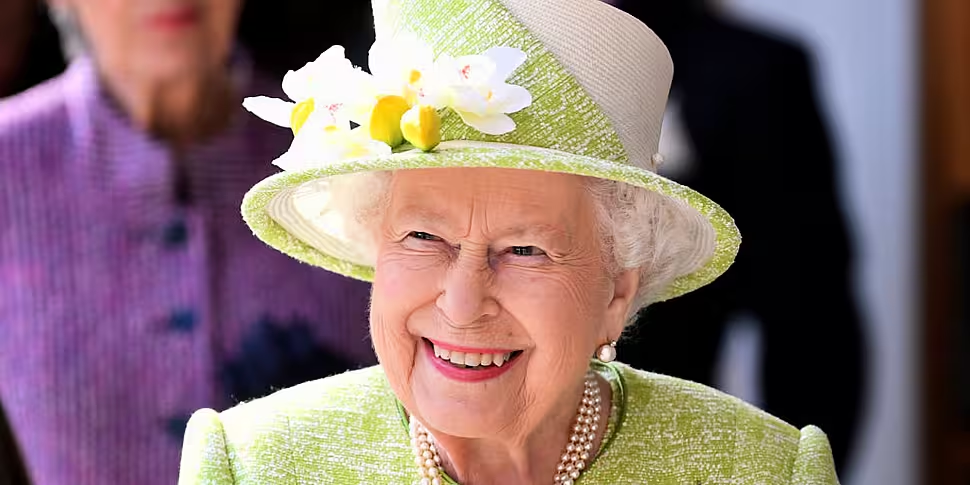Britain's Queen Elizabeth II has died at the age of 96.
She reigned for 70 years and was the longest serving monarch in British history.
Her successor is her son, Charles, who will be formally proclaimed at an accession council to be held in London in the coming days.
The Queen died peacefully at Balmoral this afternoon.
The King and The Queen Consort will remain at Balmoral this evening and will return to London tomorrow. pic.twitter.com/VfxpXro22W— The Royal Family (@RoyalFamily) September 8, 2022
He inherits the throne of the United Kingdom, 14 Commonwealth realms and becomes head of the Commonwealth of Nations.
Elizabeth was the first reigning British monarch to visit Ireland since her grandfather visited Dublin in 1911.
Her State Visit in 2011 won plaudits, and she charmed many Irish people when she began her speech at the State dinner with a cúpla focail.
Then-Taoiseach Enda Kenny opined that “her contribution… closed a circle of history”.
President Michael D Higgins paid her a return visit in 2014.
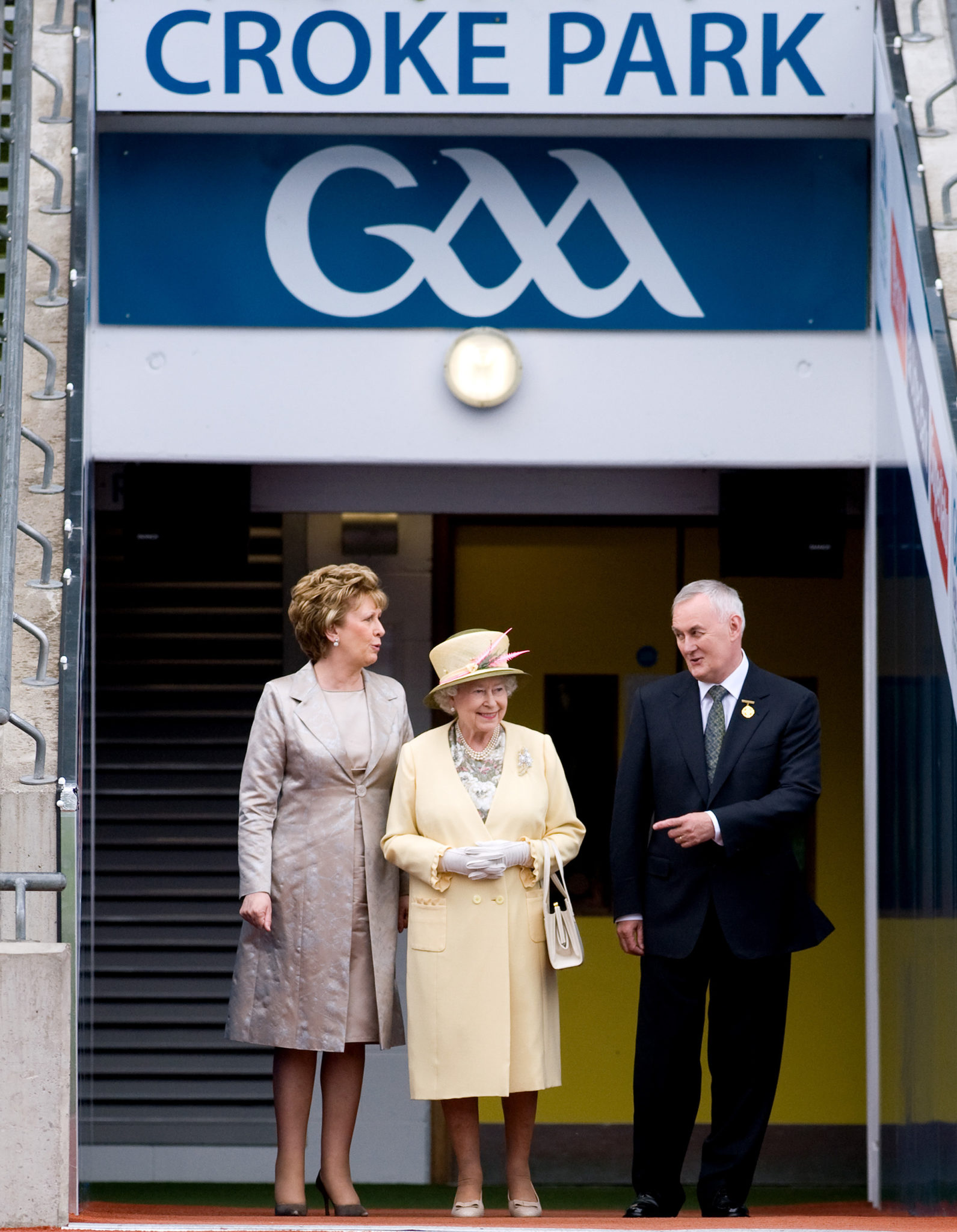 Queen Elizabeth II, accompanied by then Irish President Mary McAleese and GAA President Christy Cooney, visits Croke Park Stadium on the second day of a historical State Visit to Ireland on May 18, 2011.
Queen Elizabeth II, accompanied by then Irish President Mary McAleese and GAA President Christy Cooney, visits Croke Park Stadium on the second day of a historical State Visit to Ireland on May 18, 2011.Never meant to be Queen
Born in 1926, Princess Elizabeth was never destined to be Queen.
She was the eldest daughter of King George V’s second son, the Duke of York.
Had her uncle Edward VIII not sensationally abdicated in 1936, she might have reasonably expected to live out her days as a respectable minor royal.
But it was not to be and Elizabeth moved to Buckingham Palace with her family.
It was a tumultuous time in European history; Hitler was in power in Germany and de Valera used the opportunity of the change of reign to announce Ireland would replace the King’s Governor-General with an elected President.
When war broke out in 1939 there was debate about whether Elizabeth and her sister, Margaret, should be sent to Canada for their own safety.
The response from her mother Queen Elizabeth was emphatic: “The children won't go without me. I won't leave the King. And the King will never leave.”
Elizabeth spent the war years ensconced at Windsor Castle and when she turned 18 she joined the Auxiliary Territorial Service (ATS) - the women's branch of the British Army.
The sight of the glamorous young Princess in overalls was a significant boost to the morale of the British people, and would forever link her in the popular imagination with the most significant period of British history.
A life of service
Elizabeth was with her parents in South Africa on her 21st birthday and it was there that she made the most significant speech of her life.
In Cape Town, she looked down the barrel of a TV camera and told those watching: "I declare before you all that my whole life whether it be long or short shall be devoted to your service and the service of our great imperial family to which we all belong."
It was a promise she would never break.
The enduring trauma of Edward VIII’s decision to quit meant ‘abdication’ was a dirty word in Buckingham Palace, and even in the final days of her life she was working.
On Tuesday, she “graciously” accepted Boris Johnson’s resignation as British Prime Minister and then appointed Liz Truss as the 15th of her lengthy reign.
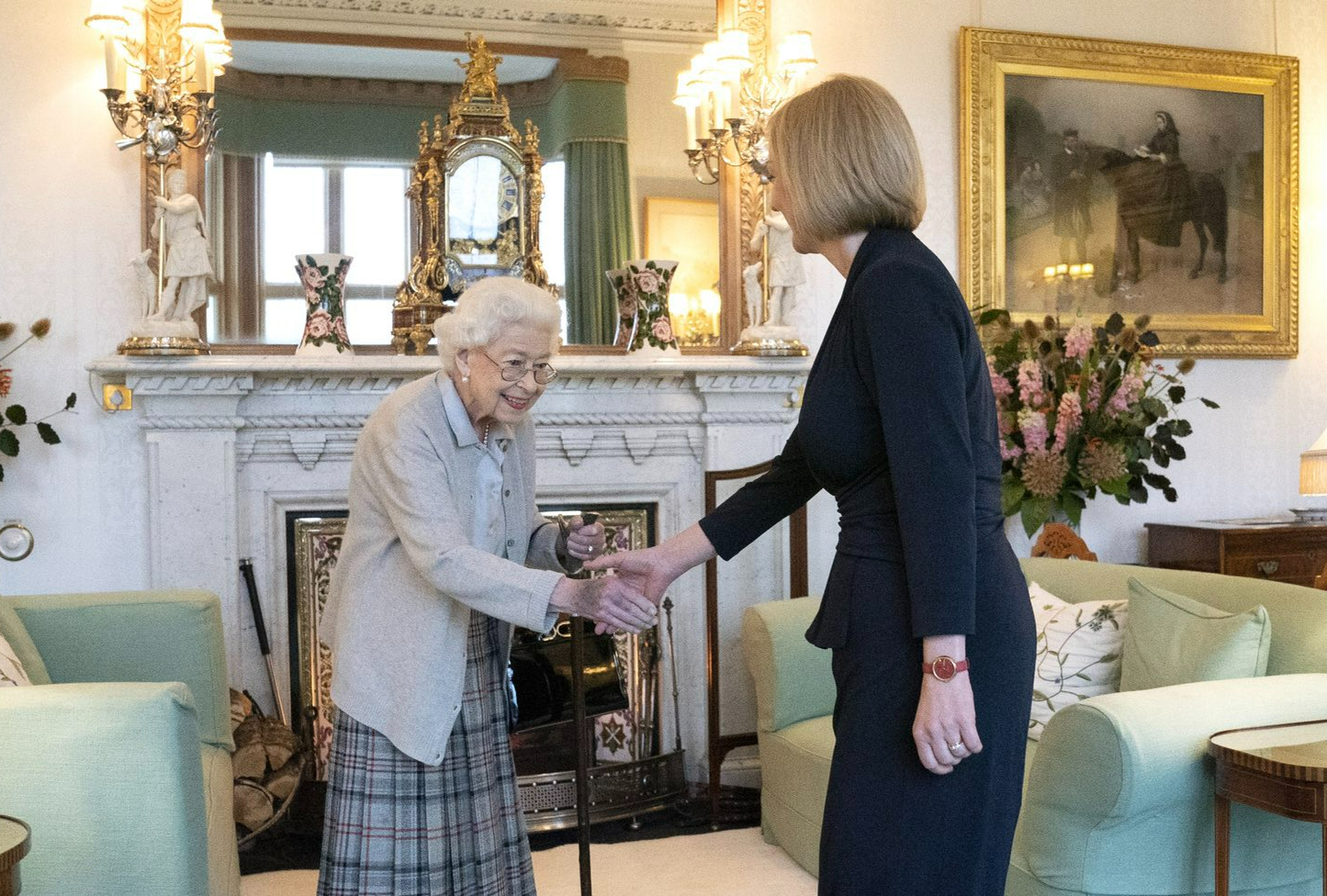 Queen Elizabeth appoints Liz Truss as Prime Minister.
Queen Elizabeth appoints Liz Truss as Prime Minister.Queen Regnant
It was 6th February 1952 that the life of King George VI came to a peaceful end.
He had been ill for some time but he was still a relatively young man at 56.
He had asked his daughter and son-in-law to represent him on a Royal tour of the empire, and it was in a forest in Kenya that Elizabeth heard the news.
She had left Britain a Princess and returned its Queen.
She was aged only 25 and her first Prime Minister was Winston Churchill.
In later life when asked who was her favourite premier, her reply was unequivocal: "Winston of course, because it was always such fun."
Her coronation in 1953 was a moment of national rejuvenation for the British people.
Memories of a traumatic world war were still fresh and rationing was in place.
News that Edmund Hillary had reached the summit of Everest broke on the same day and the nation rejoiced.
Head of the Commonwealth
Throughout her long reign, the Commonwealth was one of the few political passions that Elizabeth was allowed to express.
After her coronation she and Prince Philip left for a six-month tour that saw millions of people turn out to see the young monarch.
Over the years, most of Britain’s remaining colonies gained independence - some chose to keep the Queen as their head of state, most opted to become republics.
Almost all chose to stay members of the Commonwealth and Elizabeth derived huge pleasure travelling to visit them.
"My mother once said that this country felt like a home away from home for The Queen of Canada," she told Canadians in 2010.
"I am pleased to report that it still does and I am delighted to be back amongst you all."
Occasionally some realms held referendums on whether to become a republic.
Australians voted against abolishing the monarchy in 1999, and most politicians concluded there was no point trying again while Elizabeth sat on the throne.
"She’s been an extraordinary head of state and I think frankly, in Australia, there are more Elizabethans than there are monarchists," was former Prime Minister Malcolm Turnbull’s blunt assessment.
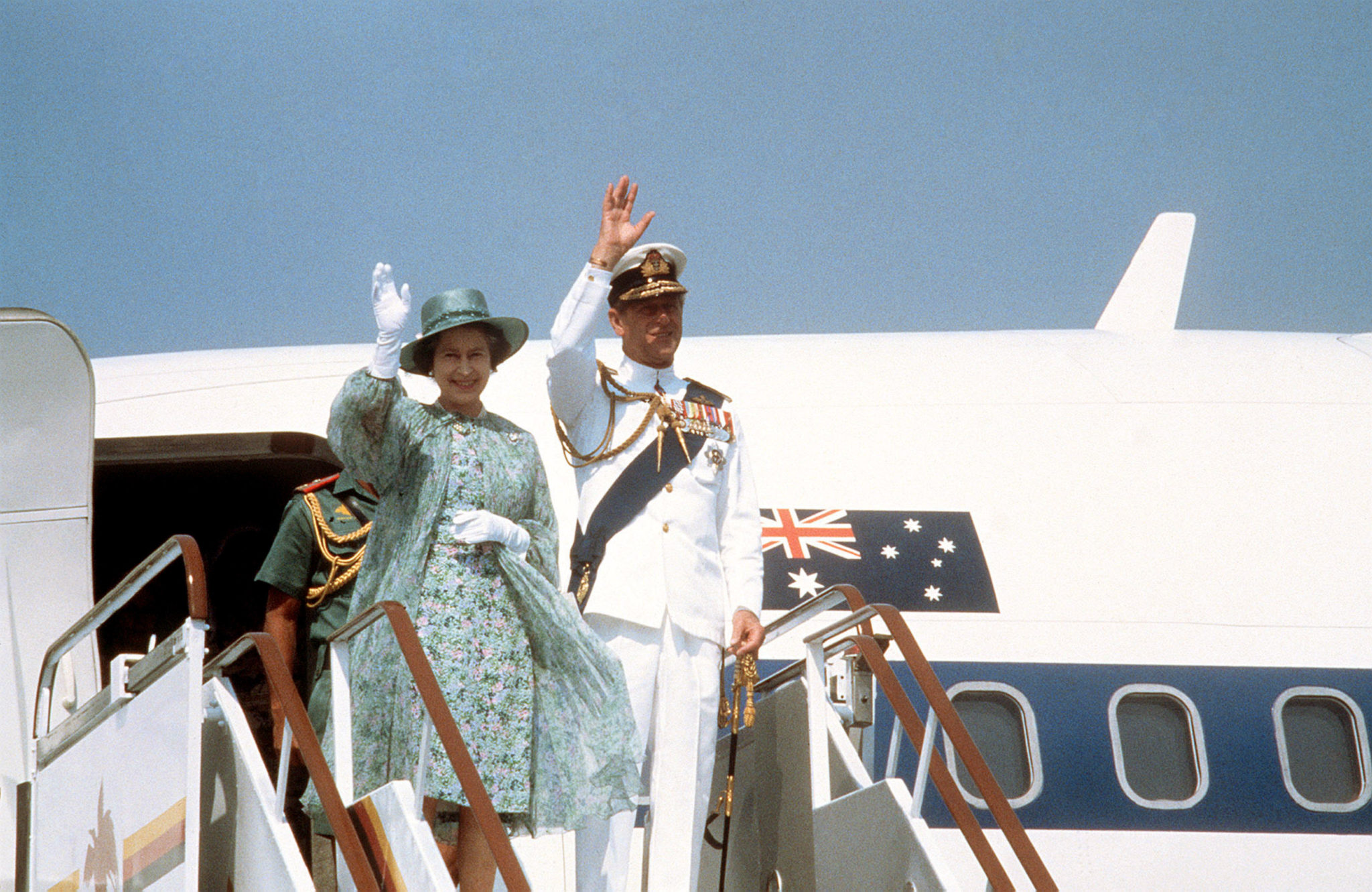 Queen Elizabeth II, Queen of Australia and the Duke of Edinburgh during their Royal visit to Australia.
Queen Elizabeth II, Queen of Australia and the Duke of Edinburgh during their Royal visit to Australia.The Queen and the green
Perhaps nowhere on earth was Elizabeth loved more than in Northern Ireland.
For Ulster unionists, she was the living symbol that bound them to Great Britain and while the policies of her government often upset them, she never did.
During her reign she visited the province 25 times, and each time she received an enthusiastic welcome from flag waving unionists.
But if Northern Ireland was a place where the Queen was loved, it was also a place where she and her family were hated.
In 1979, Prince Philip’s uncle, Lord Mountbatten, was assassinated by the IRA while on holiday in Sligo.
Two of Mountbatten’s grandchildren survived the bombing and later travelled to Balmoral to be looked after by Elizabeth and Philip.
Three years later the IRA struck in the heart of London - mere feet away from Buckingham Palace.
The Hyde Park bombings killed 11 British soldiers and seven horses. It was, Elizabeth later reflected, “the most ghastly day of my life.”
Her State Visit here in 2011 was her only visit to the Republic of Ireland, but it was by some distance one of the most important of her reign.
She laid a wreath to those who fought for Irish freedom at the Garden of Remembrance.
At Dublin Castle, she said: "To all those who have suffered as a consequence of our troubled past I extend my sincere thoughts and deep sympathy.
"With the benefit of historical hindsight we can all see things which we would wish had been done differently or not at all.
"But it is also true that no one who looked to the future over the past centuries could have imagined the strength of the bonds that are now in place between the governments and the people of our two nations, the spirit of partnership that we now enjoy, and the lasting rapport between us.
"No one here this evening could doubt that heartfelt desire of our two nations."
Former President Mary McAleese recalled that: "She didn't come as a grand visitor from next door, she did come as a very humble reconciler.
"She did love that visit. I know that because when she left, we got, the minute her plane touched down when she took off from Cork Airport after four amazing days, the minute her plane touched down her deputy private secretary rang us immediately to say that she had said on the plane that it was her very best ever State visit.
“She was delighted, she was so happy.”
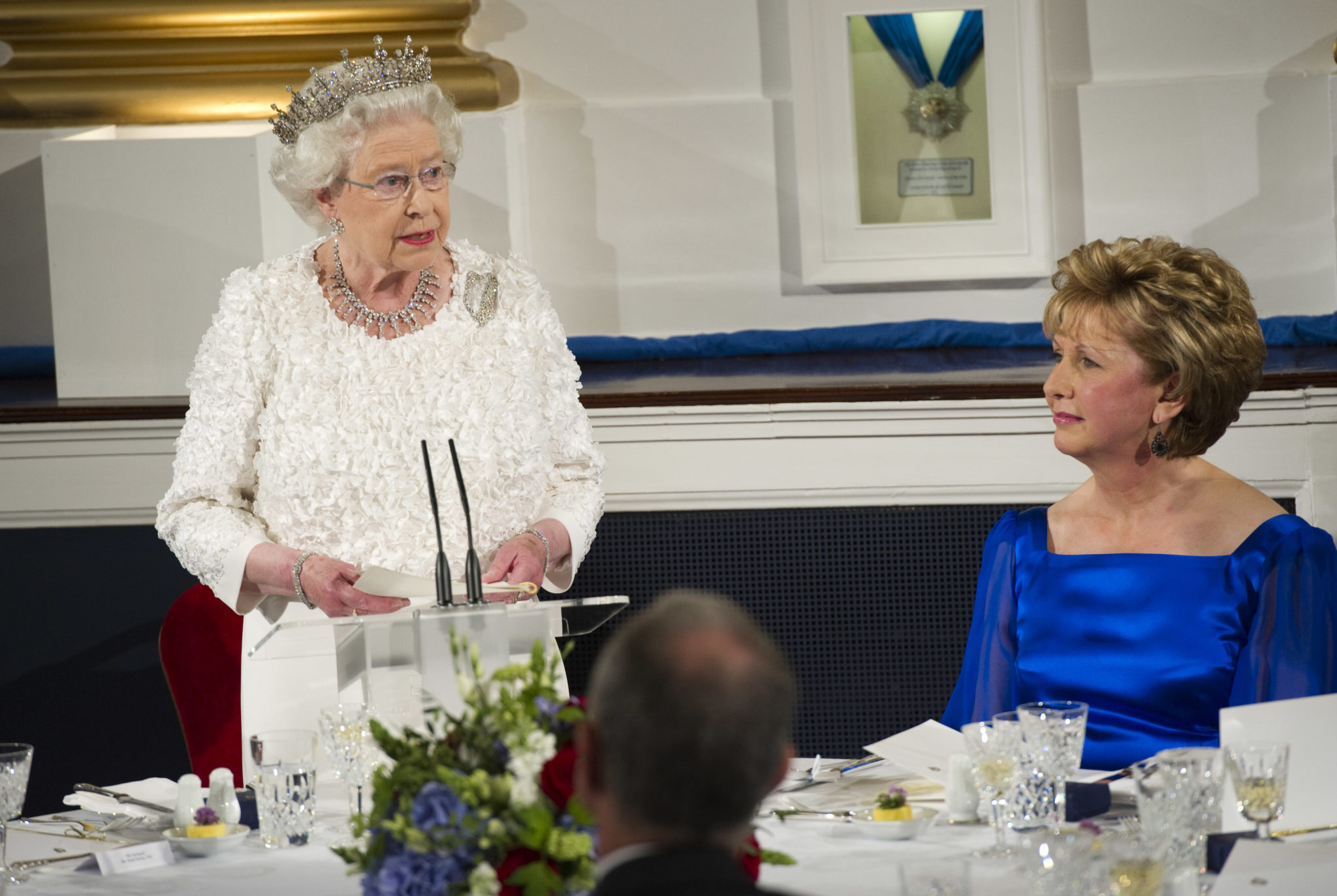 Queen Elizabeth II delivers a speech watched by Irish President Mary McAleese during a State Dinner at Dublin Castle on May 18, 2011 at the end of the second day of an historic visit to Ireland.
Queen Elizabeth II delivers a speech watched by Irish President Mary McAleese during a State Dinner at Dublin Castle on May 18, 2011 at the end of the second day of an historic visit to Ireland.Funeral
Elizabeth's funeral is codenamed 'London Bridge' and has been planned in detail.
It is expected that her body will be taken to lie in state at the Palace of Holyroodhouse in Edinburgh.
Afterwards it will be taken to London by train.
King Charles will remain at Balmoral tonight before travelling to London with Queen Consort Camilla tomorrow.
The pair are then expected to travel to Belfast, Edinburgh and Cardiff to meet mourners and civic officials.
The funeral will take place at Westminster Abbey and Elizabeth II will be buried next to her husband, Prince Philip, at Windsor Castle.
Reporting by James Wilson and Jack Quann
Main image: Britain's Queen Elizabeth II. Picture by: Toby Melville/PA Wire/PA Images


